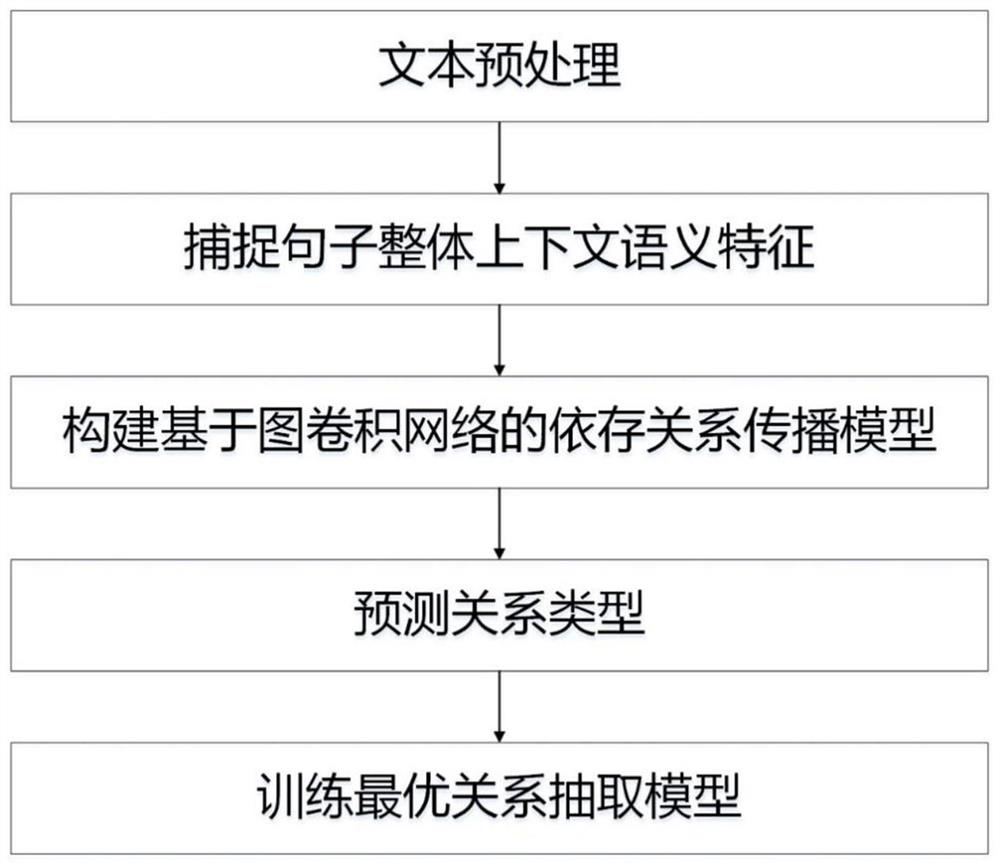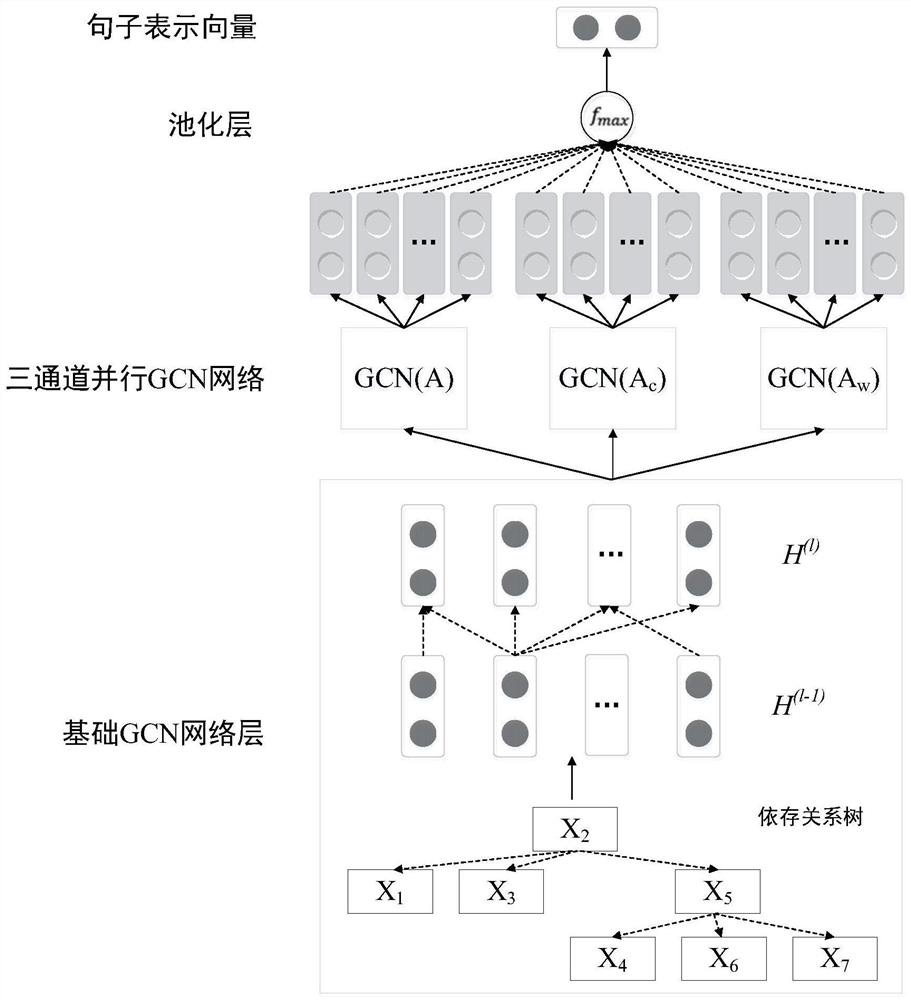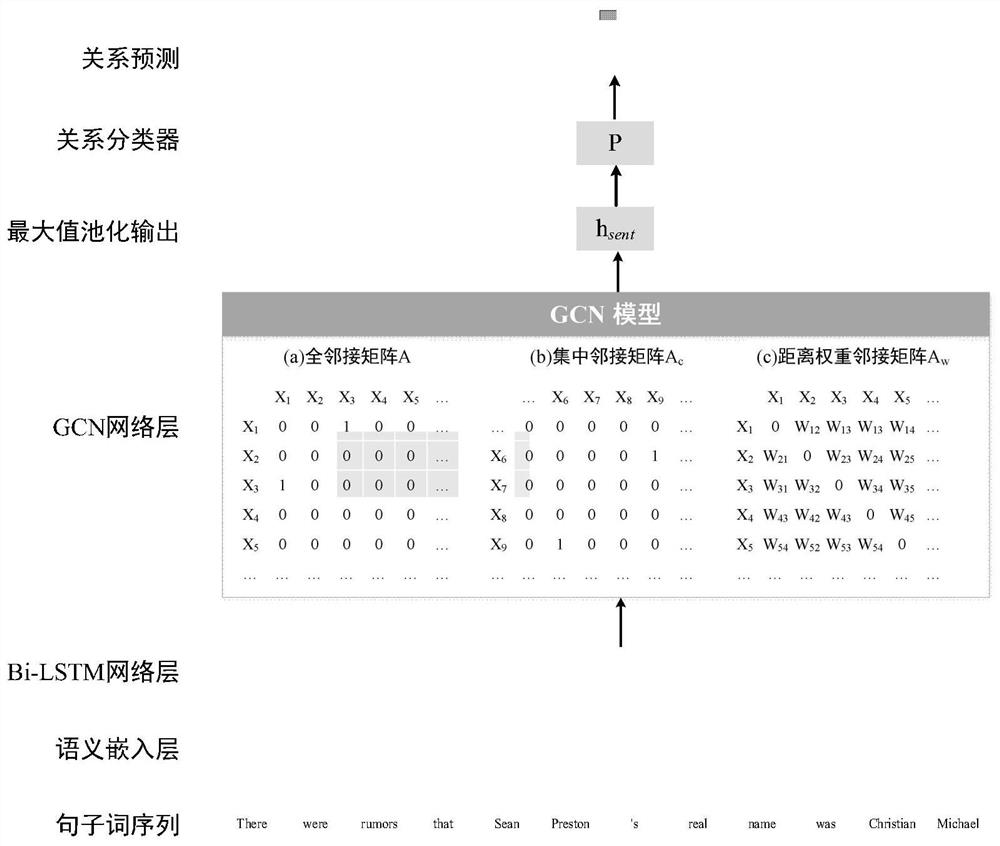Graph convolutional network relationship extraction method based on multi-dependency relationship representation mechanism
A technology of dependency relationship and convolutional network, applied in neural learning methods, biological neural network models, instruments, etc., can solve problems such as poor compatibility of model sentences, easy to ignore relational indicators, inflexible screening methods, etc., to improve recognition Accuracy, effect of auxiliary relationship extraction
- Summary
- Abstract
- Description
- Claims
- Application Information
AI Technical Summary
Problems solved by technology
Method used
Image
Examples
Embodiment
[0113] In order to verify the validity of the present invention, combine below image 3 The steps of the present invention are described in detail. This description is based on the optimal relationship extraction model that has been trained, and uses the corpus in the test set to carry out relationship prediction.
[0114] Step 1: Select an input example sentence from the test set "There were rumors that Sean Preston’s real name was Christian Michael."
[0115] Step 1.1: Segment the sentence, the result is:
[0116] “There / were / rumors / that / Sean / Preston / ’s / real / name / was / Christian / Michael”
[0117] Step 1.2: Perform part-of-speech tagging on sentence segmentation, the result is:
[0118] "RB / VBD / NNS / IN / NNP / NNP / POS / JJ / NN / VBD / JJ / NNP / "
[0119] Step 1.3: Utilize the syntactic analysis tool to carry out dependency analysis on the sentence, and generate the dependency tree (see Figure 4 ).
[0120] Step 1.4: The entity pair of the sentence is labeled {Sean Preston,Christian Mi...
PUM
 Login to View More
Login to View More Abstract
Description
Claims
Application Information
 Login to View More
Login to View More - R&D
- Intellectual Property
- Life Sciences
- Materials
- Tech Scout
- Unparalleled Data Quality
- Higher Quality Content
- 60% Fewer Hallucinations
Browse by: Latest US Patents, China's latest patents, Technical Efficacy Thesaurus, Application Domain, Technology Topic, Popular Technical Reports.
© 2025 PatSnap. All rights reserved.Legal|Privacy policy|Modern Slavery Act Transparency Statement|Sitemap|About US| Contact US: help@patsnap.com



